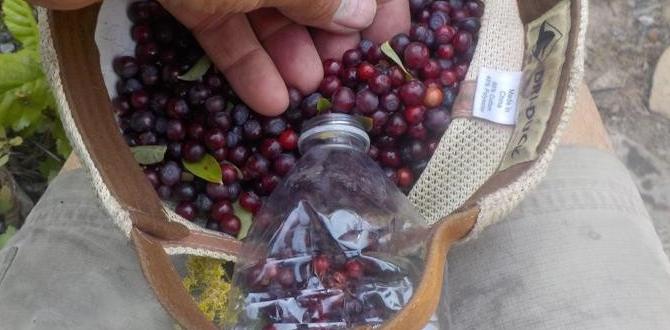Bhutan Local Markets & Street Food: Your Essential Beginner’s Guide. Dive into vibrant Bhutanese culture by exploring bustling local markets and savoring authentic street food. This guide offers practical tips and essential information for a delicious and enriching experience.
Bhutan, the Land of the Thunder Dragon, is a place where ancient traditions blend seamlessly with stunning natural beauty. For travelers, one of the most captivating ways to experience its unique culture is by exploring its local markets and trying its delicious street food. It can feel a little overwhelming at first, not knowing what to expect or where to start. But don’t worry! This guide is designed to make your market and food adventures in Bhutan easy, enjoyable, and utterly unforgettable.
We’ll walk you through the must-visit markets, introduce you to incredible local dishes, and share practical tips to ensure you have a comfortable and tasty journey. Get ready to discover the vibrant flavors and friendly faces that make Bhutanese cuisine so special!
Why Explore Bhutanese Markets and Street Food?
Bhutanese markets are more than just places to buy goods; they are the pulsating heart of the community. Here, you’ll see locals going about their daily lives, bargaining for fresh produce, handcrafted items, and traditional textiles. It’s an authentic glimpse into Bhutanese culture that you simply can’t get anywhere else. And the street food? It’s an explosion of unique flavors, often made with fresh, locally sourced ingredients. Trying these dishes is an adventure in itself, a chance to connect with the country on a deeper, more delicious level.
For travelers, especially those managing a trip with family and considering comfort needs like adult or child diapers, finding local gems can enhance the travel experience without adding stress. Knowing where to find authentic food and how to navigate markets confidently means more enjoyable exploration time, leaving you free to focus on the wonders of Bhutan.
Must-Visit Markets in Bhutan
While markets are found in almost every town, some stand out for their vibrancy, variety, and cultural significance. These are the places where you can truly immerse yourself in the local atmosphere.
Thimphu Weekend Market (Centenary Farmers’ Market)
Located on the banks of the Wang Chhu river in Thimphu, this market is a weekend institution. It’s a fantastic place to see a wide array of fresh produce, local spices, dairy products, and traditional Bhutanese snacks. You’ll find everything from vibrant chilies and mushrooms to heaps of rice and yak cheese. It’s also a great spot to pick up handmade crafts, prayer flags, and other souvenirs. The energy here is infectious, with local farmers and artisans bringing their best offerings.
Ura Village Market (Bumthang)
If you find yourself in the scenic Bumthang Valley, a visit to the Ura Village Market, particularly during festival times like the Ura Festival, is a must. This market offers a more traditional and rural experience. You’ll see unique local produce, traditional clothing, and religious items. It’s a quieter, more intimate setting compared to the Thimphu market, offering a different perspective on Bhutanese commerce and daily life.
Local Haat (Local Markets in Dzongkhags)
Beyond the main cities, smaller towns and villages (known as Dzongkhags) often have their own weekly or daily markets, referred to as “Haat.” These are often less tourist-oriented and provide an even more authentic glimpse into everyday Bhutanese life. You might find these in places like Punakha, Paro, or Phuentsholing. Ask your hotel or local guide about the schedule for these local Haats. They can be a treasure trove of unique finds and local treats.
Essential Bhutanese Street Food to Try
Bhutanese cuisine is known for its liberal use of chilies – a staple ingredient used more as a vegetable than a spice! Don’t be afraid; many dishes offer a pleasant warmth rather than extreme heat, and you can often ask for milder versions. Here are some must-try street foods:
Ema Datshi
This is Bhutan’s national dish, and you’ll find it everywhere, from fancy restaurants to street stalls. It’s a hearty stew made with chilies and cheese (often yak cheese), served hot. Ema Datshi is a culinary cornerstone, a testament to Bhutan’s love for chilies. While often served with rice, some street vendors offer smaller, more portable versions, perfect for a quick bite.
Phaksha Paa
This is a flavorful dish made with pork cooked with spicy red chilies, ginger, and garlic. Sometimes it’s served with radishes or spinach. The richness of the pork combined with the spicy kick of the chilies makes it incredibly satisfying. It’s a popular home-cooked meal and often appears in market food stalls.
Kewa Datshi
Similar to Ema Datshi, but made with potatoes instead of chilies as the primary ingredient. This offers a milder, creamier option for those who prefer less heat. The potatoes absorb the cheesy, slightly spicy sauce beautifully, making it a comforting and delicious street food choice.
Jasha Maru
A spicy minced chicken dish often flavored with ginger, garlic, and chilies. It’s hearty, flavorful, and a great way to enjoy chicken with a Bhutanese twist. You’ll often find this served with red rice, a staple in Bhutan.
Momos
These Tibetan-style dumplings are a beloved snack across the Himalayan region, and Bhutan is no exception. You can find steamed or fried momos, filled with vegetables, cheese, or minced meat. They are usually served with a spicy dipping sauce. They’re a safe and delicious option for those new to Bhutanese flavors.
Red Rice
While not exactly street food, red rice is the staple grain and is often sold in markets or served with street food dishes. It has a nutty flavor and a firmer texture than white rice. It’s nutritious and a perfect accompaniment to the flavorful Bhutanese curries.
Butter Tea (Suja)**
A traditional Bhutanese beverage made with tea leaves, yak butter, and salt. It’s an acquired taste for many, but it’s a warming and energy-boosting drink, especially in the cooler altitudes. You might find it offered by vendors or in small tea shops within the market.
Navigating Bhutanese Markets: A Practical Guide
Visiting a bustling market can be an exciting experience. Here are some tips to make your exploration smooth and enjoyable.
Best Times to Visit
The Thimphu Weekend Market is most active on Saturdays and Sundays. If you want to see a genuine local buzz, aim for Saturday morning. Smaller village markets often take place on specific days of the week, so it’s worth inquiring about this in advance.
Interacting with Vendors
Bhutanese people are generally shy but incredibly friendly and welcoming. A simple “Kuzu Zangpo La” (hello) goes a long way. Smile, be polite, and show genuine interest in their products. Most vendors appreciate respectful engagement. Remember, bargaining is not as common or as aggressive as in some other Asian countries, but polite negotiation might be possible for crafts and textiles.
What to Buy
Markets are great for finding local produce, spices, yak cheese, homemade butter, traditional Bhutanese clothing (like the kira for women and gho for men), woven baskets, prayer flags, and small handicrafts. Be mindful of what you can legally take home, especially concerning wooden items or antiques.
Hygiene and Safety
When trying street food, look for vendors who have a clean setup and are cooking food fresh. It’s always a good idea to choose busy stalls, as high turnover usually means fresher ingredients. If you have a sensitive stomach, consider eating only well-cooked foods. For travelers who need to manage personal comfort, carrying travel-sized sanitizers is always a good practice. Depending on your travel needs, discreetly carrying products like adult diapers or child diapers can ensure peace of mind for longer excursions, allowing you to fully enjoy market exploration without worry.
Payment Methods
While larger shops in cities might accept cards, most market transactions are done in cash. Bhutanese Ngultrum (BTN) is the local currency, and it’s pegged to the Indian Rupee (INR), which is also widely accepted. It’s advisable to carry smaller denominations.
Street Food Etiquette and Tips
Enjoying street food is an adventure for the senses. Here’s how to make the most of it:
Start Small: If you’re hesitant about trying new flavors, begin with smaller portions or familiar items like momos. Gradually work your way up to more adventurous dishes like Ema Datshi.
Ask About Ingredients: Don’t hesitate to ask vendors what’s in a dish, especially if you have dietary restrictions or allergies. While language can be a barrier, pointing and using simple English phrases often works. A translation app can also be helpful.
Hydration is Key: Always carry a reusable water bottle. You can often refill it at your hotel. While bottled water is available, staying hydrated is crucial, especially if you’re trying spicy foods. For parents traveling with young children, regular snacks and drinks are essential; packing travel packs of juices or small water bottles is recommended.
Be Aware of Spice Levels: Bhutanese food is often spicy! If you’re sensitive to heat, try to communicate this by saying “less chili” or “no chili.” Even if you can’t communicate perfectly, pointing to chilies and shaking your head is often understood.
Observe the Locals: Watch what locals are eating and how they are eating it. This can give you clues about popular dishes and the best ways to enjoy them.
Packing Essentials for Market & Food Adventures
To ensure your market and street food excursions are comfortable and stress-free, consider packing a few key items:
- Hand Sanitizer: Essential for cleaning your hands before eating, especially when food is served without utensils.
- Tissues/Wet Wipes: Useful for quick clean-ups after eating or for general hygiene.
- Small Bills and Coins: For easy transactions at markets.
- Comfortable Walking Shoes: You’ll be doing a lot of walking and standing.
- Lightweight Backpack or Bag: To carry your purchases and essentials.
- Reusable Water Bottle: To stay hydrated and reduce plastic waste.
- Travel-Sized First-Aid Kit: For any minor scrapes or stomach issues.
- Personal Comfort Items: For those who require them, discreet and comfortable products like adult diapers or child diapers can significantly enhance travel freedom. Ensuring you have these essentials packed allows for spontaneous market visits and longer explorations without concern. Brands like Depend adult diapers or Huggies child diapers offer reliable options for continuous comfort and protection, making travel more manageable and enjoyable for all family members.
A Sample Itinerary for Market & Food Exploration
Here’s a possible way to structure your market and street food tasting over a few days:
Day 1: Thimphu Arrival & City Exploration
- Morning: Arrive in Thimphu. Check into your hotel and get settled.
- Afternoon: Explore the city center. Visit the Tashichho Dzong and the Buddha Dordenma statue.
- Late Afternoon: Head to a local café or restaurant for your first taste of Bhutanese cuisine. Try Kewa Datshi with red rice.
- Evening: Relax and plan for the weekend market.
Day 2: Thimphu Weekend Market & Culinary Delights
- Morning: Visit the Thimphu Weekend Market (Saturday or Sunday). Sample local snacks, browse handicrafts, and interact with vendors.
- Lunch: Enjoy street food directly from the market. Try momos, perhaps some grilled corn, and a small portion of Ema Datshi with rice.
- Afternoon: Continue exploring Thimphu. Visit the Folk Heritage Museum or the Textile Museum for cultural insights.
- Evening: Consider a cooking class to learn how to make Bhutanese dishes, or revisit a local restaurant to try Jasha Maru.
Day 3: Excursion to Punakha & Local Flavors
- Morning: Travel to Punakha, known for its stunning Dzong and beautiful valley. Visit the Punakha Dzong and hike to the Chimi Lhakhang temple.
- Lunch: Find a local restaurant in Punakha. Enjoy a traditional Bhutanese meal, perhaps with river trout if available.
- Late Afternoon: On your way back to Thimphu, stop at a roadside stall for a local tea or a simple snack.
- Evening: Farewell dinner in Thimphu, reflecting on your culinary journey.
This is just a sample, and you can adapt it based on your interests and the local market schedules. The key is to be open to new experiences and savor each moment.
Cultural Sensitivity in Markets
When visiting markets and engaging with local food vendors, it’s important to be culturally sensitive. Bhutan has a unique culture that values respect and modesty. Here are some pointers:
- Dress Appropriately: While not as strict in markets as in religious sites, it’s advisable to dress modestly. Avoid overly revealing clothing. Shoulders and knees should generally be covered.
- Ask Before Taking Photos: Always seek permission before taking pictures of people, especially vendors. A smile and a gesture will usually suffice.
- Be Mindful of Noise Levels: While markets are lively, try not to be excessively loud or boisterous, which can be perceived as disruptive.
- Respect Religious Items: If you see religious items for sale or displayed, treat them with respect.
- Avoid Waste: Bhutan is committed to environmental conservation. Try to minimize waste, use reusable items, and dispose of trash properly.
The Role of Bhutan’s Food in its Culture
Food in Bhutan is deeply interwoven with its culture and philosophy. The emphasis on self-sufficiency, sustainability, and fresh, local ingredients reflects the country’s commitment to Gross National Happiness. For instance, the widespread cultivation and consumption of red rice not only provides sustenance but also embodies a connection to the land. The way chilies are used, transforming them from a mere spice into a primary ingredient, highlights Bhutan’s ingenuity and resilience. Even seemingly simple acts, like sharing a cup of butter tea, foster community bonds. For families traveling with children or individuals with specific needs, understanding these cultural nuances can enrich the experience. For example, knowing that parents might need to manage diaper changes discreetly for children or themselves during longer market visits underscores the importance of packed essentials. Researching options such as Always Discreet pads or Cuties baby diapers ensures that personal needs are met, allowing everyone to participate fully in cultural immersion.
The communal aspect of food, from shared meals to market day gatherings, reinforces Bhutan’s strong social fabric. Experiencing these food traditions offers a tangible way to understand the values that underpin Bhutanese society.
| Ingredient | Description | Common Dishes | Notes for Travelers |
|---|---|---|---|
| Chilies (Ema) | Fresh red or green chilies, often large and quite potent. | Ema Datshi, Phaksha Paa, Jasha Maru | The national spice! Ask for ‘less chili’ if sensitive. |
| Cheese (Datshi) | Fermented cheese, often from cow or yak milk. Distinctive pungent flavor. | Ema Datshi, Kewa Datshi | Flavor can be intense; try in a mixed dish first. |
| Red Rice | Whole grain rice with a nutty flavor and reddish-brown color. | Served as a side dish with most meals. | Nutritious staple. A great carbohydrate base for spicy dishes. |
| Yak Meat/Butter | A staple in higher altitudes; meat is lean, butter is rich. | Yak stew, Butter Tea (Suja) | Meat can be tough; butter tea is an acquired taste but warming. |
| Mushrooms | Various wild and cultivated varieties. | Soups, stews, stir-fries. | Often fresh and flavorful when in season. |
Frequently Asked Questions (FAQ)
What is the best time to visit the Thimphu Weekend Market?
The market is most vibrant on Saturday and Sunday mornings. Saturday morning is generally considered the busiest and most authentic time, with vendors bringing their freshest produce.
Is it safe to eat street food in Bhutan?
Generally, yes. Bhutan has high standards for hygiene. It’s best to choose busy stalls where food is cooked fresh. Drinking bottled or purified water is recommended. If you have a very sensitive stomach, start with cooked items and well-known dishes like momos or rice.






